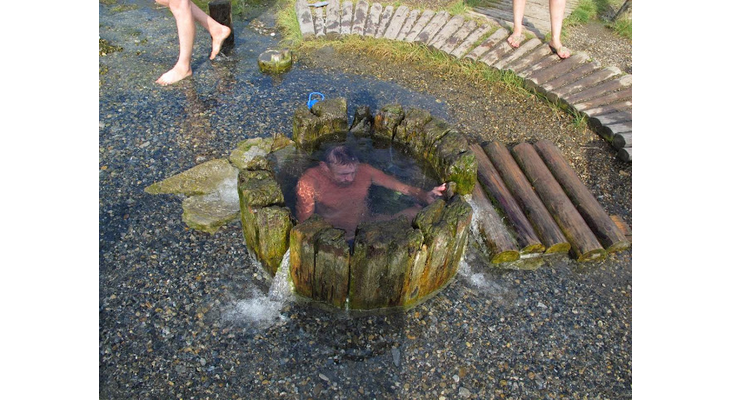### Traducere în română
This Ural city, located in the north of the Perm region, is often called the salt capital of Russia. Salt was discovered here as early as the 15th century, and since then, salt production has been the foundation of Solikamsk's economy.
The city is traversed by the Usolka River, a tributary of the Kama River, into which salt springs flow. At the beginning of the 20th century, near one such spring, the Ludmila salt well was drilled to a depth of about 100 meters to study the salt layers and determine if table salt could be extracted.
The research lasted several years, but it was found that the salt in this area was very bitter, with potassium impurities, so extraction was abandoned. However, the well was not abandoned; scientists continued to study the chemical composition of the spring. The well is active, constantly filling with salty water from the spring.
Local residents consider this water beneficial for the body. Around the well, there is a smell of hydrogen sulfide, similar to geothermal resorts. Therefore, you can often see people bathing in this well. It can be easily accessed via wooden platforms.
The Ludmila well is one of the brightest attractions in Solikamsk. In the 19th century, the Troitsky salt factory of the Riazantsev merchants was located here.
Factory worker Nikolai Riazantsev was tasked with drilling the well to determine the location of the salt layers. The competition in the Russian salt market was growing, and Solikamsk was gradually losing its position as the "salt capital" of Russia. The old methods of extracting salt (evaporation from brine) were becoming increasingly inefficient compared to direct salt mining. The salt producers in the Perm region decided to adopt new methods of salt extraction. Specialists in exploration and drilling were invited for this purpose. A new "exploration" well was needed to understand the positioning of the salt layers. Thus, the Ludmila salt well appeared.
The work began in 1906. At a depth of 98 meters, yellow salt with red veins was discovered. Being bitter in taste, it was unsuitable for boiling. N. P. Riazantsev sent the salt for analysis. In 1910, pharmacist A. Vlasov reported that the salt contained a large amount of potassium chloride with iron impurities.
Today, the well is active - water reaches the surface. Although table salt has never been extracted from the Ludmila well, it has every reason to be considered one of the main symbols of Solikamsk.
In 2010, the area around the well was landscaped and became convenient for visiting both on foot and by car. There is a small parking lot at the entrance.
Locals consider the water in the well to be healing, and people of all ages come here for its benefits. Many bathe here all year round.
- December 27, 2024
-
2.7c - Dublin
- Contacte
- ro
- ru












